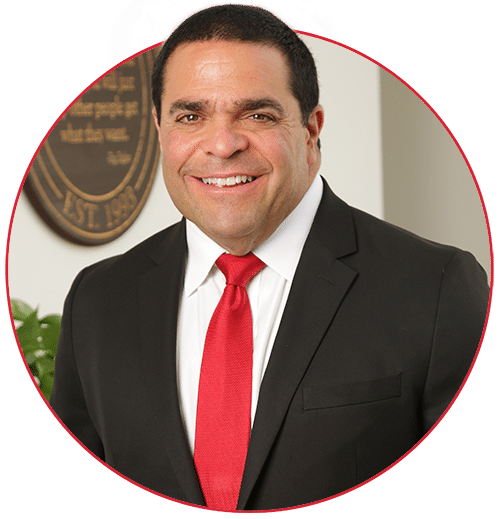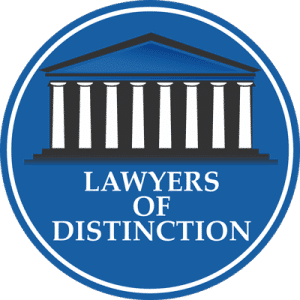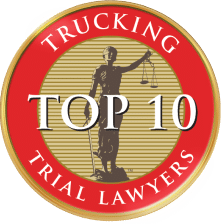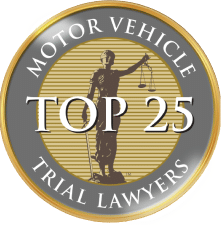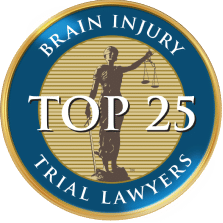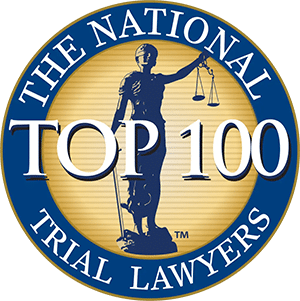How to Deal with the At-Fault Driver’s Insurance Company After an Accident?
Last updated Wednesday, February 19th, 2025
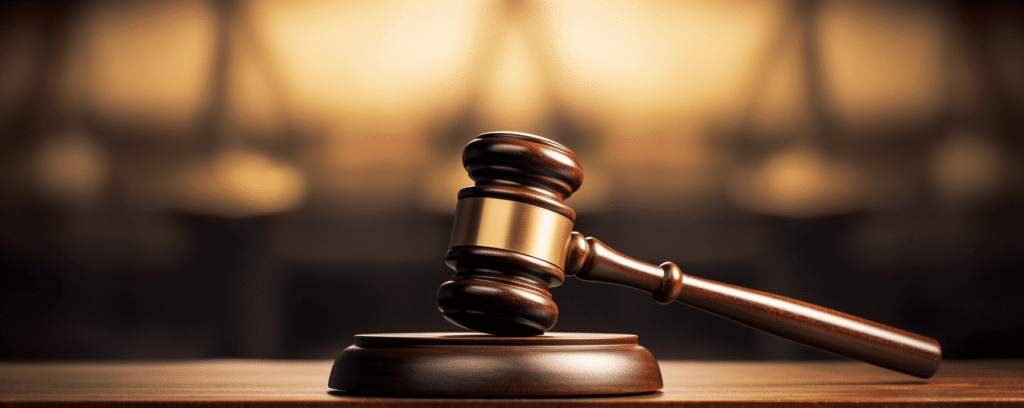
Dealing with an at-fault driver’s insurance company post-accident? Here’s a clear-cut guide on “how to deal with the at-fault driver’s insurance company”, maneuvering this process, standing your ground against adjusters, and securing what’s owed to you. By the end of this article, you’ll be equipped with concise, honest advice that arms you for the discussions and decisions ahead – with no fluff in sight.
Key Takeaways
- The primary goal of the at-fault driver’s insurance company is to minimize their financial losses by employing various tactics to challenge or reduce claim payouts, therefore understanding their strategies is essential for protecting oneself.
- Effective communication with the at-fault driver’s insurance company involves providing only necessary information, documenting all interactions, and often letting a personal injury attorney handle communications to safeguard one’s rights and interests.
- Collecting comprehensive evidence is critical in supporting one’s claim, which includes taking photos of the accident scene, documenting injuries and symptoms, acquiring a police report, and ensuring consistent documentation throughout the claim process.
Understanding the At-Fault Driver’s Insurance Company’s Perspective
The first step to effectively dealing with an at-fault driver’s policy and their insurance company, as well as the other driver’s insurance company, is understanding their perspective. Their main objective is to limit financial losses. They tirelessly search for strategies to downgrade or dismiss your claim, which could involve interpreting police reports in their favor or underplaying the severity of your injuries.
Keep in mind, insurance companies operate like any other business, and their profits spike when they pay fewer claims. As a result, they might implement strategies to deduct the amount they owe to the car accident victim. Identifying these tactics and safeguarding yourself from manipulation is vital.
Recognizing their tactics
Insurance adjusters often seek recorded statements not primarily to compensate fairly, but to find information that can be used to lessen or deny your claim. While it might seem like they’re trying to help, their primary goal is to save their company money. They may use the content of these recorded statements to spot inconsistencies, weakening your case.
Furthermore, insurance representatives from your insurance provider often contact victims shortly after an incident. This is not out of concern, but rather to capitalize on your vulnerability and extract information that could minimize the company’s liabilities. They’re banking on the fact that you might not be thinking clearly or might unknowingly admit to something that could be used against you.
Protecting yourself from manipulation
To shield yourself from these tactics, exercise caution in your dealings with the at-fault driver’s insurance company. Refrain from giving recorded statements and do not sign any forms, such as medical release forms, without consulting an attorney. These can be used against you in legal proceedings.
Before engaging in discussions with the insurance company, it’s paramount to seek legal advice. Doing otherwise can lead to suboptimal outcomes. Be vigilant of insurance tactics that may attempt to delay proceedings or dispute the severity of your injuries. Document all interactions meticulously, noting down dates, times, and details of the conversations.
Communicating with the At-Fault Driver’s Insurance Company
Having familiarized yourself with the tactics of insurance companies, it’s essential to grasp how to communicate with them effectively. Remember, you are not legally required to speak with the at-fault driver’s insurance company. It is often advisable to let them initiate contact after an accident.
When speaking to the at-fault driver’s insurance company, follow these guidelines:
- Provide only basic information such as the date, time, location, and vehicles involved.
- Keep conversations concise, sticking to the facts and avoiding elaboration or speculation.
- Document the interaction by taking notes during the conversation.
- Assert your expectations and avoid being pressured into providing excess information.
Let your insurance company and attorney handle it
Managing interactions with the at-fault driver’s insurance company can be intricate and stressful. It is beneficial to have legal representation manage these communications to navigate the complexities of the claim and protect your rights. If you have a personal injury attorney, direct the at-fault driver’s insurance representative to communicate through your attorney.
Your insurance company or attorney can be present during calls with the at-fault driver’s insurance company to provide support and ensure you do not provide information that could harm your claim. Remember, insurance adjusters may suggest that there is only a small amount they are willing to pay, which is a tactic to make you settle for less compensation than you might be entitled to.
Avoid providing unnecessary information
Providing unnecessary information can be detrimental to your claim. Insurance adjusters may act friendly to persuade you to share information that can be used to reduce your claim’s value. Be wary of the at-fault party’s insurer asking for a recorded statement soon after the accident; it can be leveraged against you.
When giving details, avoid admissions of fault or guesses, and instead provide concise yes or no answers when possible. Do not agree to blanket medical authorizations, as insurers may search your medical history for pre-existing conditions. Refrain from detailing the incident or injuries on social platforms; insurers might track these to challenge your claim. If unsure about a detail, saying ‘I don’t know’ is better than speculating, to maintain claim integrity.
Gathering Evidence to Support Your Claim

- Photograph the accident scene and any property damage
- Document all injuries and delayed symptoms
- Seek immediate medical evaluation even for non-apparent injuries like whiplash
- Acquire a copy of the police report
- Ensure all medical reports are collected to document the extent of damages and injuries
To build a strong case for your claim, it is important to collect a wide range of evidence such as:
- Photos
- Videos
- Satellite images
- Dashcam footage
- Detailed notes about the accident including skid marks, road conditions, and all parties’ information
Additionally, maintain logs of all interactions with insurance companies, and be consistent in your statements and medical treatments to establish credibility for your claim.
Documenting the accident scene
The accident scene can yield vital evidence for your claim. Here are some important steps to take:
- Take pictures of the accident scene from multiple angles.
- Photograph the vehicles involved, including the license plates, make, and model.
- Document any documentation such as driver’s licenses and insurance papers.
These steps will help create a comprehensive record of the incident and the parties involved.
Promptly writing down a personal account of the events ensures the final statement is detailed and accurate, which is critically revisable before submission. Using an accident report form can be crucial for collecting eyewitness statements effectively, ensuring that no details are missed.
Collecting and organizing all pertinent documentation, including photos, officer details, and the official accident report, is key to reinforcing the facts of your claim during the claims process.
Obtaining a copy of the police report
A police report serves as an official record of the accident, and it can bolster insurance claims and legal proceedings. These reports are unbiased accounts of the accident and contain valuable information such as:
- The location
- The time
- Witness statements
- Diagrams of the scene
To obtain a police report, follow these steps:
- Note the officer’s name and badge number, along with the report identification number, at the scene of the accident.
- Call the traffic division of the local law enforcement agency.
- Provide the report number or details like the date, time, and location of the accident.
Working with Your Own Insurance Company
Collaborating with your own insurance company is a vital step post-accident. Contacting your insurance company soon after an accident helps to assess damages sooner and establishes good-faith accident-reporting efforts, which can expedite repair works or rental car assistance, especially if the other insurance company denies responsibility or their insurance is invalid.
In cases where the other driver refuses to accept fault, your insurance company may pursue subrogation to recover the costs of the collision claim and any deductible you may have paid. If a claim is made under the policy and the accident wasn’t the policyholder’s fault, car insurance rates may not increase; additionally, if a car is totaled and you’re not the at-fault party, you might not have to pay the deductible, and you can choose to keep the totaled car with a salvage title considering its reduced value.
Filing a claim with your insurance
In terms of submitting an insurance claim with your insurance company, it’s necessary to submit a statement and file a claim subsequent to an accident. If your policy includes transportation expense coverage, you may be eligible for payment for a rental car or other transportation while your vehicle is repaired, subject to your policy limits.
If a driver totals a car and lacks collision insurance, the insurer will not reimburse for the actual cash value of the car. Insurance companies may require authorization before they proceed with any vehicle repairs and injury treatments. Consider the options between fighting the at-fault driver’s insurer on your own or filing a claim with your own insurer.
Understanding your coverage
When confronting an auto accident, it’s pivotal to comprehend your insurance coverage. Here are some key types of coverage to consider:
- No-fault insurance: provides for a portion of medical costs and lost wages after an accident, irrespective of who was responsible.
- Collision coverage: essential for damages to your vehicle in a crash.
- Uninsured motorist (UM) coverage is not just limited to vehicle repairs.
Understanding these types of coverage can help you navigate the aftermath of an accident more effectively.
Comprehensive coverage offers financial protection against theft and non-collision damage like fires, floods, and vandalism. Policy provisions for using OEM parts versus aftermarket parts could entail additional expenses if your policy doesn’t cover them. In situations where you owe more than the car’s depreciated value, gap insurance can help cover the remaining balance on an auto loan after a total loss.
Hiring a Personal Injury Lawyer
Engaging a personal injury lawyer can substantially impact the result of your claim. At Isaacs & Isaacs, we provide peace of mind by:
- Handling all case aspects
- Formulating trial strategies
- Offering legal guidance, including estimating compensation chances
- Navigating the court proceedings
We will strive to ensure full compensation for all damages, including lost wages, medical expenses, and potentially overlooked factors such as emotional distress and longer-term impacts like disability. We possess the knowledge and experience to counteract adjuster tactics, ensuring that you are not taken advantage of during this difficult time.
Legal guidance and protection
Isaacs & Isaacs can offer legal counsel and safeguarding. We can speak on your behalf to the insurance companies, ensuring your rights are protected against tactics designed to minimize compensation. One of our experienced attorneys can prepare your statement to ensure that it is accurate and protects your legal rights.
Insurance companies may suggest that hiring an attorney is unnecessary, to discourage victims from seeking advice that could increase their claim’s value. Isaacs & Isaacs can negotiate with the insurance company on your behalf, leveraging our experience to counteract adjuster tactics. We have a deep understanding of legal intricacies and can effectively navigate local court interpretations.
Negotiating a fair settlement
Seasoned attorneys can negotiate effectively with insurance companies, leading to a more beneficial settlement for you. Legal professionals can identify all compensable areas in a client’s claim, therefore maximizing the settlement value during negotiations.
Insurance companies may use tactics like misrepresenting legal entitlements, offering low-ball settlements,but attorneys are equipped to counter these strategies and advocate for a fair settlement. The threat of litigation can be a powerful tool in negotiations, and attorneys are prepared to present in trial to argue for maximum compensation should the insurance company not agree to a reasonable settlement.
Dealing with Uninsured or Underinsured Motorists
Regrettably, not every driver on the road possesses adequate insurance. In these instances, you may find yourself dealing with uninsured or underinsured motorists. Uninsured Motorist Coverage compensates you when an accident is caused by an uninsured motorist or in the case of a hit-and-run; underinsured motorist coverage helps when the at-fault driver lacks sufficient coverage for the costs of a serious accident.
If involved in an accident with an uninsured or underinsured at-fault driver, you can pursue a claim with your uninsured motorist insurance (UIM), file a police report, and should not accept any money or admit liability at the accident scene. After an incident with an uninsured driver, contacting your insurance company is crucial as they are the primary source for covering medical bills under no-fault insurance, and you may file an accident claim with them for expenses.
Filing a claim with your own insurance
Lodging a claim with your own insurance company frequently presents the optimal course of action when handling uninsured or underinsured motorists. Uninsured/underinsured motorist coverage is part of a Standard Policy which pays for damages if the at-fault driver lacks insurance, while a Basic Policy does not cover vehicle damages caused by an uninsured or underinsured driver.
Claims can be filed under this coverage if the other driver was at fault and legally responsible for the damages, or if their vehicle is considered uninsured, such as in cases of theft or non-cooperation. In Ohio and Indiana, a $500 deductible applies to all such claims, and underinsured motorist benefits are available only if your coverage limits exceed the at-fault driver’s liability limits.
NOTE: In KY, you can have the same amount of coverage as the at-fault driver and still have a claim.
Pursuing legal action
Occasionally, if an insurance settlement offer falls short and does not encompass all damages and losses, initiating legal action may be the most apt course. However, potential costs involved in a lawsuit can be substantial, and should be weighed against the possible benefits of a more favorable compensation.
Filing a lawsuit might lead the at-fault driver’s insurance company to re-evaluate their position and potentially offer a better settlement to avoid the costs and risks of trial. This is another area where hiring Isaacs & Isaacs to have on your side can be advantageous.
Frequently Asked Questions
Should I tell my insurance company it was my fault?
It’s generally recommended to avoid discussing fault with the insurance company and to consider seeking legal advice before providing additional information. This can help protect your rights and ensure you handle the situation carefully.
What happens when the insurance company makes a mistake?
If an insurance company makes a mistake, you can resolve the issue by contacting them directly or filing an internal appeal to rectify the error. Taking these steps can prompt the company to overturn its decision and address the mistake efficiently.
What happens if you don't tell your insurance about a claim?
If you fail to notify your insurance about a claim, you may be personally liable for damages if a third-party claim is made, and you will need to cover medical and vehicle repair expenses on your own. Be sure to inform your insurer to avoid these consequences.
Is it better to go through my insurance or theirs
Yes, it’s better to call your insurance provider regardless of fault, as they can guide you through the claims process and assess your coverage.


